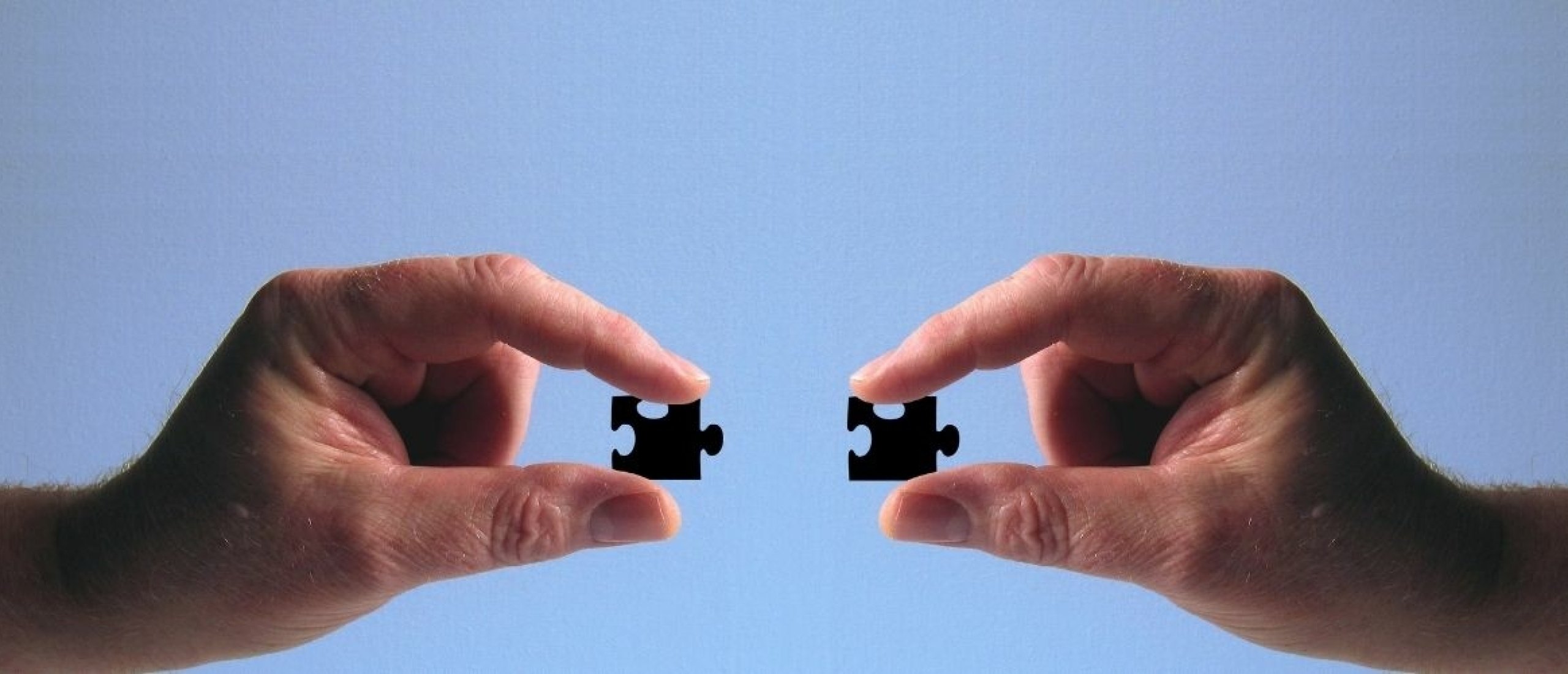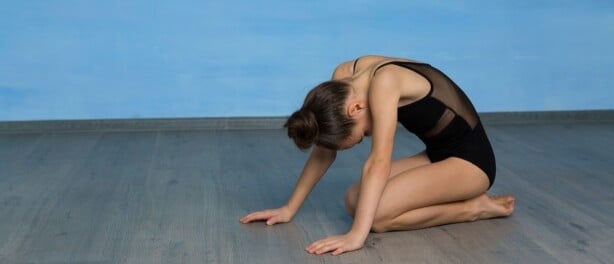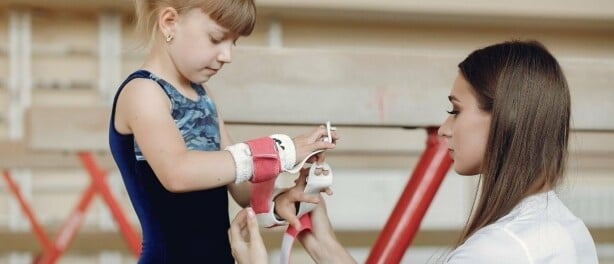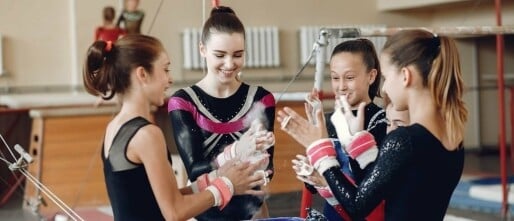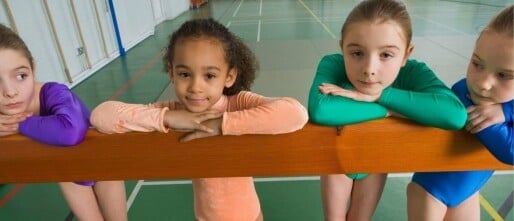In this blog I will give you some tips how to introduce cooperation between your gymnasts in class. If gymnasts get along well with each other, if there is more cooperation and can help each other, it can make your gymnastics lessons a lot easier. This way you have your hands free as a coach. And you can make sure that you can help more during your lessons and you can also teach more.
Why is cooperation important?
- Independence. A degree of independence is of course necessary. In this way, gymnasts also ensure that they can work independently during the lessons, if necessary without an assignment. As a gymnastics coach, we are often asked: "Why don't the gymnasts do something when I don't say anything? That's something you really have to teach them and it's not always obvious.
- More autonomy and self-confidence. This is also something the athletes will need in the future. And it is your job as a gymnastics coach to teach them. To give them more autonomy and self-confidence so they can deal with that autonomy.
- Train potential assistants/trainers. This is very important for your club; if you let gymnasts help each other, you are already training potential assistants who can eventually become trainers. In gymnastics, the shortage of trainers is enormous. So the more we can prepare gymnasts for this, the better. In addition, these trained trainers often stay in your own club longer than when you bring them in from outside. This is therefore a very important reason to teach gymnasts cooperation at an early age.
- Good for a positive learning climate. This is, of course, always important for the lesson groups you have, both for recreational and for selection lessons.
Pitfalls of trainers
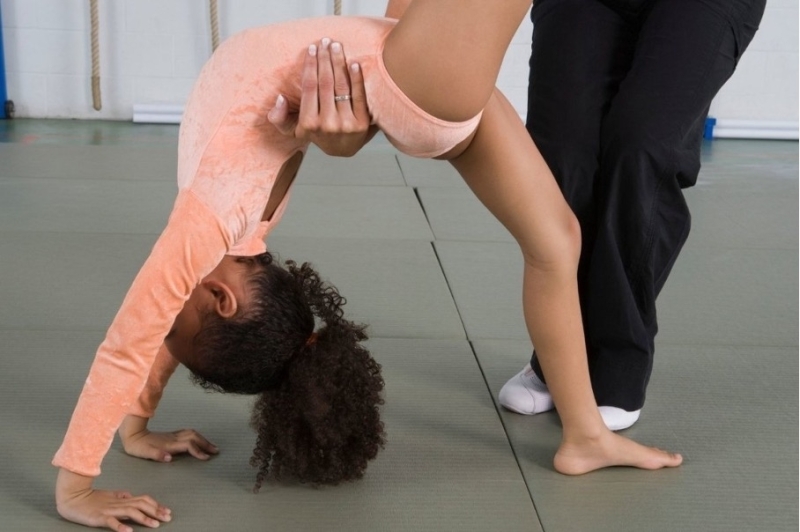
- Dare to give up: It is not always easy for every trainer to get the gymnasts to work well together. Sometimes we have the tendency to want to do a lot ourselves. Of course it is not at all strange to catch someone or give them help, but sometimes we have the tendency to do everything ourselves. That's why we often find it very difficult to hand things over and to trust the gymnasts that they can do it themselves or together.
- Have confidence in gymnasts. We need confidence in the athletes we teach and that is not always easy, especially because there is also a difference in the athletes you teach.
- They can often do (much) more than you think. Even when they are still young, for example when you are teaching 5- or 6-year-olds, young talents. They can really do much more than you sometimes think. Sometimes we fill in too much for the athletes and give them too little room for cooperation.
Starting to cooperate
- In any case, always start small and define the task. This ensures the greatest success and also enables them to cope with the task. If we give tasks that are too big, things can go wrong. And as a coach, we are not happy about that and then you have a kind of relapse. That also makes it more difficult for you to delegate more next time. For example, start in pairs before moving on to coaching in groups.
- Move materials together. For example, have a few gymnasts move a bench together or eventually a thick mat. In doing so, they practise very defined tasks and know how to work together.
- Checking each other's form tension. For example, one gymnast lies on her back and makes a small bowl and the other tries to keep her legs together. This is a game to check whether the form tension is good and they also learn to work together and to recognise when someone is tense and when not. This is, of course, very useful in gymnastics, so that the gymnasts know for themselves.
- Helping with a handstand. Finally, the gymnasts can help each other with a handstand. This way you don't have to help all gymnasts individually anymore but you make different groups where the gymnasts help each other with the handstand.
It is important to build up on a small scale so that we don't give up too quickly and have accidents as a result. As it gets better and the gymnasts understand the exercises better and can help each other, you can expand and let them do more difficult things while helping.
Participation ladder
The participation ladder is the extent to which you involve an athlete and the extent to which you give them freedom of choice or an assignment. Often, as a coach, we start by giving an assignment. So a gymnast gets an assignment, for example "Get a mat" and eventually we move on to more ownership. The goal here is: The more ownership, the more likely it is that gymnasts learn the most from it, can decide more themselves and thus ultimately also get more autonomy. For example, you give the gymnasts two options through which you let them decide and eventually you give them ownership whereby they can determine things themselves and make their own choices. As a coach, you build this up with the athletes you teach.
Autonomy support
How do you ensure that you increase the autonomy of your athletes?
- Ask more questions. It often helps to ask open-ended questions, which ensure that we do not fill in everything from the gymnasts.
- Give choices. Using your participation ladder, give your gymnasts more and more choices instead of you as a coach saying "This is the only option, this is what we are going to do".
- Give them their own responsibility and speak to them about it. Build up their own responsibility a little and address your athletes when things are not going well or when they have done well. Reward them for that too.
Choose the right warm-ups/closings
Here are some practical tips that you can use in your gymnastics classes.
- Think carefully about the warm-ups and closings you offer. These are two components in your lessons that you can use to get gymnasts to work together. Especially during recreation we often offer tag. Tagging creates a kind of partnership where the gymnasts work together. For example, there is also tag in the hoop; when someone is tagged, they have to stand in a hoop. Several gymnasts end up in a hoop together and they have to work together to be able to tag the other gymnasts.
- At the beginning of your training you can, for example, practice the handstand or the form stretch together.
- At the end of your training you can, for example, have gymnasts do strength training in pairs or do condition training. Sometimes it's just very small things that can make gymnasts do more things together, that's also a form of cooperation.
Cooperation during exercises
- In this example you can see the wheelbarrow, this is how they learn to practice the handstand when working together.
- In the second example you can see a preparation of the flick. So instead of helping your gymnasts as a coach, they can also help each other and perform the exercises independently.
- Another preparation for flikflak. This is a roll you can use for this.
- Here the gymnasts use a long mat if you don't have a roll.
- Another example of practising the flikflak is the three gymnasts here. Then you add an Arab to be able to do the Arab flikflak, in this case they help each other with a yoga ball. When I came up with this the first time, I noticed that the gymnasts really enjoyed it. At the beginning I helped and made sure that everything was safe and that they could do it well. In the end, the group could do it themselves and I could walk away and help the other gymnasts. In this way, the gymnasts were able to work on their own and perform the exercise independently. So you can make yourself a bit superfluous as a coach.
Organisational forms
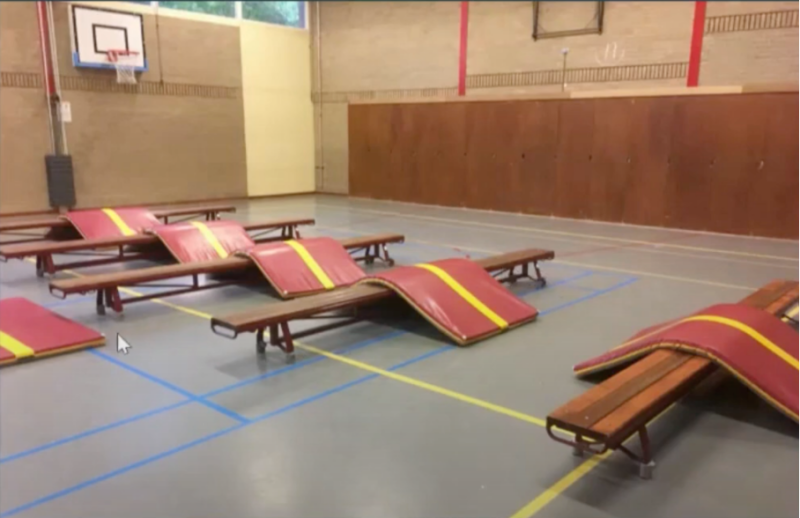
Think carefully about the forms of organisation you offer, which will also help you determine whether you will have gymnasts working together.
Here you can see an example in a gym where I had different groups working together. In this case it was an advanced recreation group. This was a replacement for the beam. We had few bars available but I did have a lot of benches and a fairly large class. In this case I had gymnasts work together in trios and I had them do a somersault on the bench with a mat. Then two gymnasts could sit on the sides to help each other. They learned how to help each other with the somersault and in the end they could do it themselves and change every time.
In this way, I could offer different exercises, for example, I had to make them move the mat to the front or the back. With that, they could do a cartwheel off the bench, for example. Or they could do a handstand or a handstand roll-over. In this way, I was able to do various exercises whereby I was no longer needed, but I was able to keep an overview of the lesson group and all the gymnasts were busy working together.
Game forms
- Here you can see an example of a game form. Here you can also see that some gymnasts are better at cooperation than others. It is therefore good to see which gymnasts fit together and if you notice that you are superfluous as a coach you can observe what they do and which gymnasts need help. In this way you can help well as a coach.
- You can also use challenges. In this example you see two gymnasts who are doing the upswing for the belly turn or the loosening-up, where they can score points by swinging a piping bag away with their legs. The higher the stone bag is, the more points they can get. In this way, they are not working at the same time, but they are working with each other. This is another form of working together where they are more facing each other to work together.
- In the other example, you see a head roll where they had to take stuff, so then they are also working together. This is therefore another form of collaboration. So you see that in your gymnastics training you can vary a lot with the types of cooperation that you can offer in your own training. Try to play around with this and offer your athletes different things. That makes your lessons very fun and the gymnasts eventually learn a lot from it.
Additional activities
Another form that can contribute well to the cooperation between gymnasts is organising extra activities. Sometimes it doesn't just stop with the lessons you give. But also the things you can organise around it can contribute very well.
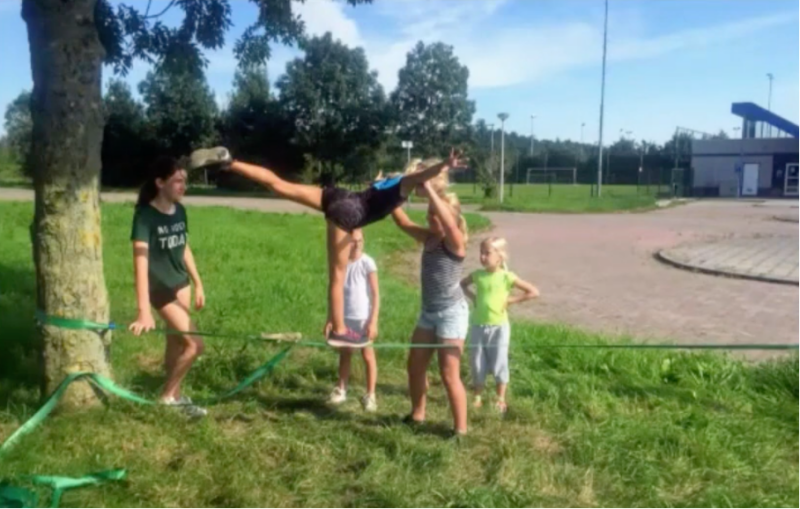
In this case, it was a camp at the club where I was teaching. I had brought my own slackline and here you can see that the gymnasts help each other in the activity and work together. So you can also make sure that the gymnasts learn to work together outside of gymnastics training.
Some examples
- Birthdays: At a club where I taught, I first saw that when it was someone's birthday, they were allowed to stand on a block and then all the other gymnasts carried her to the other side and put her down. This was also a form of cooperation, which I found very funny.
- Outings: For example bowling or other things.
- Kamp: This creates a bond between the athletes.
So you can think of many different things to do to make sure they learn to work together.
Additional tips
- Pay attention to the group composition. As a coach, you learn this as you teach often and know the groups well. Eventually you will know exactly who can and cannot work well together and also how much space you can give the gymnasts with ownership.
- Always create a positive helping atmosphere. By nature, gymnasts end up wanting to help each other, so they should enjoy helping each other.
- Reward gymnasts who help others. It helps especially if you reward gymnasts who help each other. I often watch very closely whether gymnasts help other gymnasts on their own accord and I often walk up to them and say "It's great that you are helping the other gymnasts. I am very happy about that and you are doing a great job! If it goes really well, you might even approach them as an assistant.
More tips?
I hope these tips for introducing your groups to cooperation have helped you. If you need more tips, we have several downloads on our website. For gymnastics trainers we have a huge platform with all different lesson preparations, different videos, ready-made lesson plans; all things that make it possible to prepare your gymnastics lessons extremely fast.
We have also recorded many different videos for trainers, which can be found on our Youtube Channel. In any case, I wish you lots of success with your upcoming gymnastics training!

